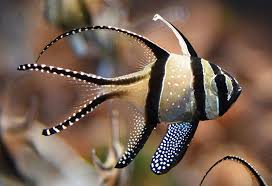Traditional Chinese theater, including Peking opera (京剧, Jīngjù), Kunqu opera (昆曲, Kūnqǔ), and Cantonese opera (粤剧, Yuèjù), has long been an essential part of China’s cultural heritage. Among the many themes and symbols in these theatrical performances, the dragon (龙, Lóng) holds a significant and revered role. The dragon is not just a mythical creature but a representation of divine power, imperial authority, and supernatural protection.

From costumes to stage design, character roles, and storylines, the image of the dragon is deeply embedded in traditional Chinese theater. This article explores how dragons are portrayed in Chinese theatrical performances, their symbolism, and their cultural significance throughout history.
1. The Symbolism of Dragons in Chinese Theater
1.1. The Dragon as a Representation of Power
- In traditional Chinese belief, dragons symbolize strength, wisdom, and heavenly authority.
- In theatrical performances, the presence of a dragon often signifies a character of royalty, divine origin, or immense strength.
- Emperors and celestial beings in plays are often associated with dragon imagery, emphasizing their superior status.
1.2. The Dragon as a Guardian Spirit
- Many theatrical performances depict dragons as protectors, ensuring the safety of heroes, kingdoms, or sacred places.
- The Dragon King (龙王, Lóng Wáng), a common character in Chinese folklore, appears in plays where he controls water and grants blessings or punishments.
1.3. The Dragon as a Force of Nature
- In some plays, the dragon represents the forces of nature, particularly storms, floods, and the balance of yin and yang.
- Performances about natural disasters or cosmic battles often include dragon motifs, symbolizing the power of the heavens.
2. The Dragon in Traditional Chinese Opera Costumes
2.1. The Dragon Robe (龙袍, Lóngpáo)
- The dragon robe is an essential costume in Chinese opera, worn by characters portraying emperors, generals, or celestial beings.
- The five-clawed golden dragon is reserved for the emperor, while lesser ranks may have four-clawed or three-clawed dragons.
- The colors of the robe indicate rank and status:
- Yellow and gold: Exclusively for the emperor.
- Red: For high-ranking officials and noble warriors.
- Blue and green: For deities and supernatural figures.
2.2. Dragon Headdresses and Accessories
- Characters playing warriors or celestial beings often wear headdresses featuring dragon motifs, symbolizing their divine power or martial prowess.
- Some operas feature dragon-shaped weapons or dragon-engraved armor for heroic figures.
3. The Role of Dragons in Famous Chinese Theater Stories
3.1. The Legend of the White Snake (白蛇传, Bái Shé Zhuàn)
- One of the most famous Chinese operas, “The Legend of the White Snake,” features a dragon as a central symbol of divine intervention.
- In the story, Xu Xian (许仙), a human, falls in love with Lady White Snake (白素贞, Bái Sùzhēn), a spirit in disguise.
- The Dragon King of the East Sea (东海龙王, Dōnghǎi Lóngwáng) makes an appearance, showing his control over water and storms.
- The dragon’s presence symbolizes destiny, power, and the struggle between humans and the supernatural.
3.2. Journey to the West (西游记, Xī Yóu Jì)
- Based on the classic novel, this opera tells the story of Tang Sanzang (唐三藏) and his journey to India, accompanied by Sun Wukong (孙悟空, the Monkey King).
- The Dragon King and his son, the Dragon Horse, play important roles in aiding the travelers.
- The Dragon Horse (龙马, Lóng Mǎ), transformed from the Dragon King’s son, serves as the monk’s divine steed, reinforcing the dragon’s role as a guardian of wisdom and enlightenment.
3.3. The Eight Immortals Cross the Sea (八仙过海, Bāxiān Guò Hǎi)
- This opera tells of eight Taoist immortals crossing the East Sea, encountering the Dragon King along the way.
- The Dragon King tests the immortals, leading to an epic display of magical battles.
- This story highlights the balance between spiritual beings and the forces of nature, with the dragon as a powerful yet negotiable force.
4. Dragon Dance in Chinese Opera and Folk Theater
4.1. The Influence of the Dragon Dance (舞龙, Wǔ Lóng) in Theater
- The Dragon Dance, often performed during festivals and celebrations, has influenced movements and choreography in Chinese opera.
- In operas that feature dragons, actors often use graceful and fluid motions to mimic the movement of a serpent-like dragon.
- Some performances include life-sized dragon props, manipulated by multiple performers to create the illusion of a living dragon on stage.
4.2. The Dragon’s Role in Ritual Theater
- In certain Chinese folk operas, the appearance of a dragon marks an auspicious or divine moment.
- Some village performances use dragon imagery to bless new rulers or celebrate good harvests.
- The dragon is also invoked in exorcism rituals, where it is believed to chase away evil spirits.
5. Modern Interpretations of Dragons in Chinese Theater
5.1. Dragons in Contemporary Chinese Opera
- While traditional opera maintains classical portrayals of dragons, modern adaptations often include LED-lit dragon props, digital effects, and elaborate stage projections.
- Some theaters incorporate wire-flying techniques, allowing actors to perform aerial dragon dances, creating a mesmerizing illusion of dragons soaring through the sky.
5.2. Dragons in Chinese Film and Theater Fusion
- In modern Peking opera films, dragons are often portrayed using CGI and animation, blending ancient myth with new technology.
- Some Broadway-inspired Chinese productions reinterpret dragon legends, making them accessible to international audiences.
Conclusion: The Dragon’s Enduring Role in Chinese Theater
The dragon remains one of the most powerful and enduring symbols in Chinese theater, representing imperial authority, divine protection, and the forces of nature. Whether appearing as a majestic emperor’s robe, a supernatural being, or a guardian spirit, the dragon’s influence on costumes, performances, and stage design is undeniable.
As Chinese theater evolves, the dragon continues to be a central figure, preserving centuries-old traditions while adapting to modern artistic expressions. This timeless creature, with its deep cultural and symbolic significance, ensures that Chinese theater remains a living art form, full of myth, legend, and grandeur.

Leave a Reply